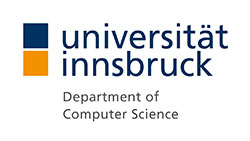We make the measurability of our R&D results one of our primary tasks. We want to show to the world that semantic technologies are becoming reality. Find out more about our results and our spin-off companies.
Semantic Information Integration in the COG Project
Information integration in enterprises is hindered by differences in software and hardware platforms and by syntactic and semantic differences in the schemas of the data sources. This is a well-known problem in the area of Enterprise Application Integration (EAI), where many applications have been developed for the purpose of information integration. Most current tools, however, only address the problems of (soft- and hardware) platform and syntactic heterogeneity; they fail to address semantic differences and only support one-to-one (syntactical) mappings between individual schemas. In this White Paper we present the approach to semantic information integration that was applies in the COG project. We describe the Semantic Information Management along with the Unicorn Workbench tool, part of the Unicorn System, and how they were applied in the project to solve the information integration problem. We used the Semantic Information Management Methodology and the Unicorn Workbench tool to create an Information Model (an ontology) based on data schemas taken from the automotive industry. We map these data schemas to the Information Model in order to make the meaning of the concepts in the data schemas explicit and relate them to each other, thereby creating an information architecture that provides a unified view of the data sources in the organization. We furthermore provide an extensive survey of other efforts in semantic information integration and a comparison with our approach in the COG project.
Contact person in charge.

